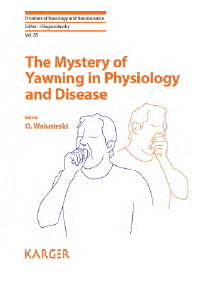

-
|
- 10 avril
2025
- Neurology
- 2025;104(7
supp)
- Scholarpedia
|
- Exploring
Parakinesia Brachialis Oscitans:
- Insights
into Post-Stroke Phenomena
- Anshum Patel and Ipshita Garg
|

|
-
- Tous
les articles sur la parakinésie brachiale
oscitante
- All
articles about parakinsia brachialis
oscitans
-
-
- Objective:
- Our research focuses on the root causes and
visible symptoms of Parakinesia Brachialis
Oscitans (PBO) following strokes. We're aiming
to pinpoint the brain areas associated with PBO,
grasp its effects on how patients recover, and
use this understanding to refine diagnostic
techniques and tailor rehabilitation efforts
more effectively.
-
- Background:
- PBO is a unique neurological phenomenon
characterized by involuntary movements of the
hemiplegic arm triggered by yawning, primarily
observed in stroke patients. This literature
review consolidates findings from various case
studies to illuminate the pathophysiology of
PBO, its clinical implications, and potential
significance in neurorehabilitation.
-
- Design/Methods:
- This comprehensive review analyzed articles
published from 2011 to 2024 that reported cases
of PBO in patients with ischemic and hemorrhagic
strokes and demyelinating diseases. These
studies utilized advanced imaging modalities
such as MRI and SPECT to delineate the
correlation between specific cerebral lesions
and the manifestation of PBO. Data pertaining to
the onset, frequency, progression, and
persistence of PBO symptoms relative to the site
and extent of neurological damage were
synthesized.
-
- Results:
- Findings indicate that PBO frequently occurs
in patients with lesions in the internal capsule
and basal ganglia, implicating the
cortico-ponto-cerebellar and spinocerebellar
pathways. The onset of PBO varied from immediate
to several months poststroke, underscoring a
complex interaction between impaired cortical
control and intact subcortical motor pathways.
Persistent PBO was noted to serve potentially as
a clinical marker for extensive neurological
injury.
-
- Conclusions:
- PBO provides a unique window into the
adaptive mechanisms of motor control following
significant neurological injury and challenges
traditional models of motor recovery.
Recognizing and understanding PBO can
significantly affect the development of targeted
therapeutic strategies, potentially enhancing
the efficacy of rehabilitation protocols and
improving patient outcomes.
-
-
- American Academy of Neurology (AAN)
https://www.aan.com
- 2025 Annual Meeting | P1 - Poster Session
1
-
-
-
|
|


